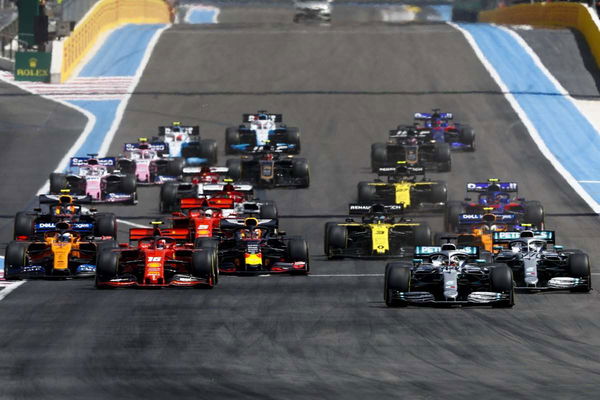

Ever since the French Grand Prix returned to the calendar, F1 has gone racing for 106 laps. Each of these 106 laps has been excruciating to watch as a racing fan. When F1 first announced the return of the Paul Ricard circuit, fans were thrilled and the hype was real.
ADVERTISEMENT
Article continues below this ad
French Grand Prix- Circuit Paul Ricard layout
A classic track was making a comeback at a time when racing needed to be revived. The best part was that it wasn’t a street circuit. Fans were of the opinion that the spirit of racing had finally been saved.
We couldn’t have been any further from the truth and this mainly due to the track itself. Unlike a conventional race track, Paul Ricard utilizes a special mix of asphalt and tungsten as run-off areas. Traditional race tracks use gravel, sand or grass as run-off. This promotes greater precision in driving from racers and automatically penalizes drivers who stray from the racing line.
Paul Ricard on the other hand, utilizes varying levels of abrasion to slow down drivers that venture off. The result? blatant corner-cutting, drivers taking more liberty when approaching corners and a general disregard for the racing line. To make matters worse, the run-off areas are massive – which results in significant driver errors having no consequences.

via Imago
By Bbb2007 – https://www.formula1.com/en/championship/races/2018/france.html, CC BY-SA 4.0, https://commons.wikimedia.org/w/index.php?curid=67412820
The Paul Ricard circuit has two major overtaking zones. The first- between turns 7 and 8 and the second- between turns 9 and 10. These straights are of considerable length, but not long enough. Many drivers were clamoring for the chicane dividing the two straights to be removed, but circuit authorities declined the request.

Eric Boullier proposes minor changes
Eric Boullier was recently named Managing Director of the French Grand Prix. Boullier was previously the team principal of Lotus F1 and Racing Director for McLaren F1. Eric Boullier has come up with some revisions to Circuit Paul Ricard that will hopefully promote better racing.
Boullier has proposed changes to the first sector of the race track- involving turns 1 to 5. The main objectives of the change are to promote faster lap times and encourage teams to run a lower downforce setup. Speaking to RaceFans, Boullier said: “we are going to redesign all the first sector, basically.”
“The chicane stays in place,” confirmed Boullier-referring to the chicane between turns 8 and 9.
ADVERTISEMENT
Article continues below this ad
“We don’t want to change the DNA of the track. We have this famous Signes corner (T 10) which maybe is the fastest one in the whole calendar, plus the double Beausset (T 11). So we have keep the DNA of the track.”
Boullier also explained the opportunity for increased overtaking and wheel to wheel racing.
“Now this is in the hands of the FIA because we need obviously an homologation for that changes. So we need them to look at it and come back to us and tell us ‘yes’ or ‘no’ or changes or not. We made a couple of suggestions so now we’re waiting for them to give us a green light.” -remarked Boullier.
ADVERTISEMENT
Article continues below this ad
The fate of the French Grand Prix now lies in the hands of the FIA, FOM and Liberty Media. The 2019 race was an absolute snooze fest and won the unofficial prize for ‘most boring grand Prix of the year’. Many fans are still irate over losing Hockenheim and keeping Paul Ricard.
The French Grand Prix will be held on June 28, 2020.
ADVERTISEMENT
ADVERTISEMENT
ADVERTISEMENT
ADVERTISEMENT

